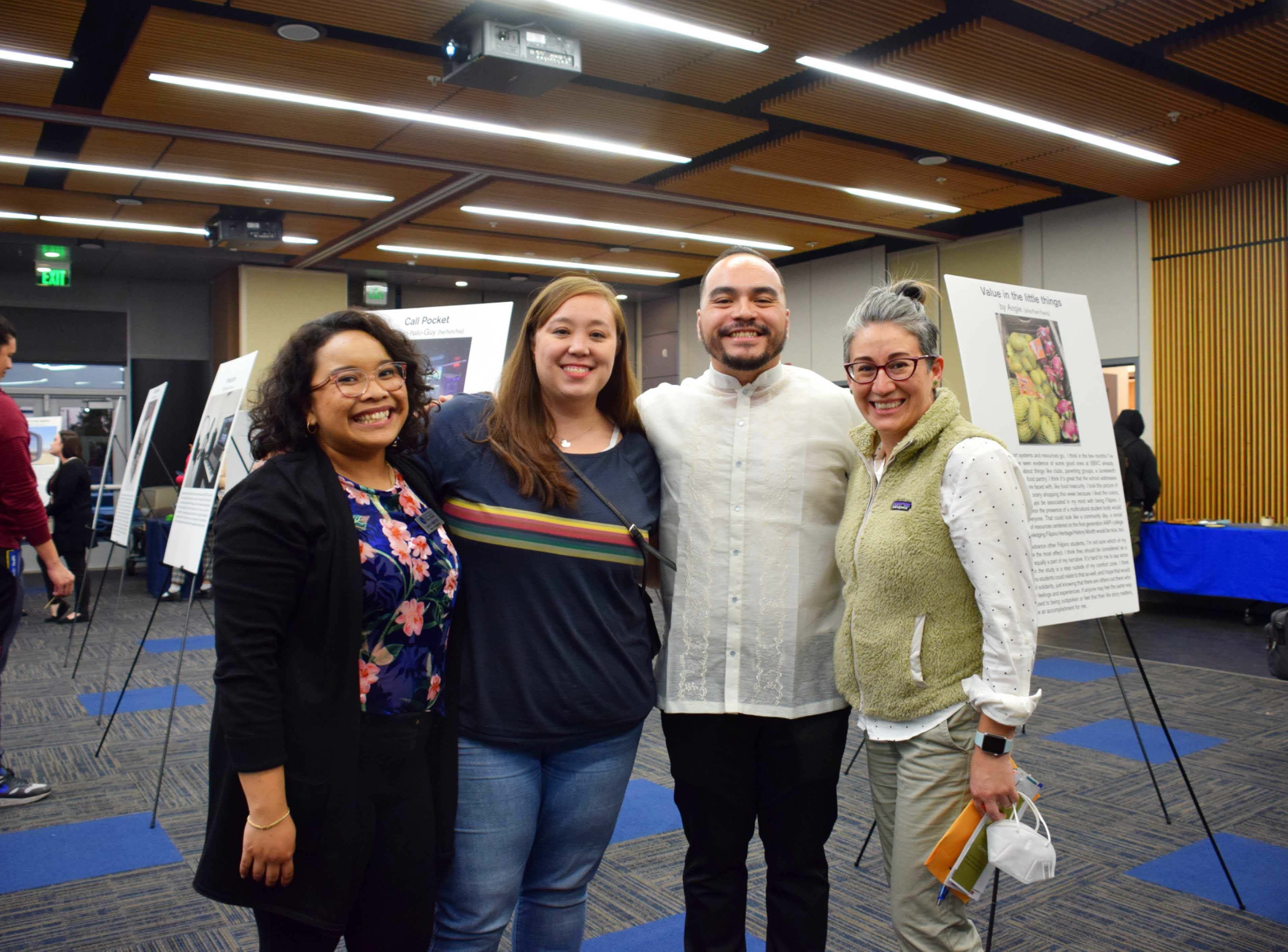From the lens of (In)Visibility puts the focus on SBVC’s FilAm students

Historically seen as an "invisible minority," Filipino/a/x (FilAm) students at San Bernardino Valley College made their voices heard during a recent exhibition on campus, sharing pictures and written narratives about their lives.
"From The Lens of In(Visibility): A Photovoice Inquiry Into How Community Colleges Can Advance Filipino/a/x American Student Resilience" was on display at SBVC October 27-31. The exhibit was hosted by the San Bernardino Community College Asian Pacific Islander Association (APIA), San Bernardino Community College District Office, and SBVC's Arts and Humanities Department and curated by English Prof. Rangel Zarate. Nine students, many of them from SBVC, participated in the project.
A photovoice exhibition is "a gallery-style display showcasing the lived experiences of minoritized communities through photos and narratives, all while working towards some sort of policy or systemic change for that community," Zarate said. The photos and narratives were collected digitally, and Zarate then printed them on foam boards so they could be displayed on easels.
Participants shared a range of snapshots, showing their daily activities as well as major life moments. "I could describe all of the photos as representative of the students’ needs on campus, illustrations of their successes and struggles as FilAms in college during a pandemic and how family, friends, racial trauma, racial identity, and navigating this space all contribute to their resilience," Zarate said. "Part of photovoice is using it as a participatory action research method so the students as co-curators have agency to choose which photos and narratives they wanted displayed at the exhibition as well as who they wanted to invite to the exhibition."
Local dignitaries attended the opening night event, and shared their gratitude for the project, "praising it for its intentionality and its honest reflection on what it means to be a FilAm community college student during a pandemic," Zarate said.
For the students who participated, especially those who live in the Inland Empire, it was "a labor of love," Zarate said. "The exhibition is part of an initiative to visualize and bring to the public consciousness how FilAm students are navigating educational and personal spaces in the midst of the pandemic. The work we have done together for the past three months could not have been possible without their narrative and guidance and we are also proud that we were able to share this work in October during Filipino American History Month."
To view the project's photos, please visit https://zarar300.wixsite.com/from-the-lens-of--in

